Growth Spurts
My wife and I recently purchased our 12-year-old son a new pair of shoes and new pants only to discover a month later, he’s complaining that he can’t make them fit!! Geesh.
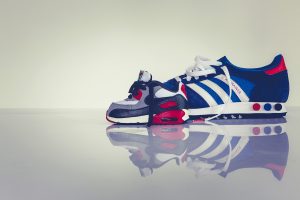 Funny too, is that he liked a girl in school but she grew taller than him; a deal breaker apparently. What a time for crazy growth spurts!!
Funny too, is that he liked a girl in school but she grew taller than him; a deal breaker apparently. What a time for crazy growth spurts!!
Typically, between the ages of 10 and 13 for boys and 8 to 13 for girls, they experience the initial stages of puberty. With surges of testosterone in boys and estrogen in girls, puberty triggers a variety of physical changes that lead to sexual maturity. While growth spurts may occur before, during or after puberty, most puberty-related growth spurts occur in the early-to-mid teenage years.
During this time of rapid growth, profound growth changes to the bones and muscles have an effect on athletic performance and injury rates. Crucial for the young athlete, is to work with coaches, trainers and health care professionals that have an advancement understanding and experience working with this age group.
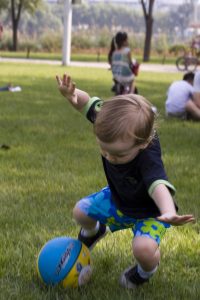 As you might expect, with such rapid growth in such a short period of time, bones and muscles grow at different paces making coordinated movement a challenge.
As you might expect, with such rapid growth in such a short period of time, bones and muscles grow at different paces making coordinated movement a challenge.
- At birth the head is half its adult size, but the trunk is one-third and the legs one-fifth of the adult size—they all grow at different rates.
- We grow inward—hands and feet grow first, then arms and legs. Growth in legs peaks before growth in stature, resulting in those gangly legs that trip kids up!
- Bone growth happens first, followed by the laying down of soft tissue—then mineralization of the bone. That’s one reason there are more fractures at this time, as well as an inability to coordinate movement, hence adolescent awkwardness and clumsiness.
With all of this taking place, the potential for growth related injuries becomes a real concern. Here are just a few common examples of these types of injuries:
- 10 to 13 years of age – Achilles insertion point on the heel (Sever’s disease)
- 12 to 16 years of age – Patella tendon attachment on the tibia (Osgood Schlatter’s disease)
- Late adolescence – lower back and iliac pain
- The change in female body shape during the growth spurt has its own particular injury risks. The hips widen, placing the femur at a greater inward angle. During running or walking, this increased femur angle leads to greater inward rotation at the knee and foot. This can result in a whole host of lower limb maladies.
- Traction injuries are caused by repetitive loading while the tendon is sensitive to stress as the bones and tendons are fusing. These traction type injuries can ultimately result in avulsion fractures at bone growth sites.
So, from the ages of 8 – 13, there are periods of time where our kids are going through significant growth spurts. These are usually easy to spot as they lose coordination, gain appetite, may have more aches and pains.
Below are a few considerations for our young athletes undergoing a growth spurt.
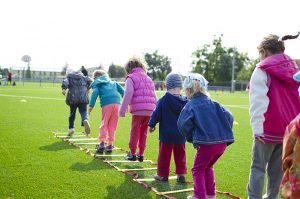 Exercise – Exercise will neither stunt nor promote growth in terms of height but it does thicken the bones by increasing mineral deposits. Growing bones are sensitive to stress. Therefore, it is important to decrease training load (volume and intensity) during this time.
Exercise – Exercise will neither stunt nor promote growth in terms of height but it does thicken the bones by increasing mineral deposits. Growing bones are sensitive to stress. Therefore, it is important to decrease training load (volume and intensity) during this time.
Strength training – strength improvements are definitely possible in younger athletes but the majority of gains are made because of neurological recruitment; not muscle gain. If coaches are to place young athletes on strength training programs then they must ensure:
- young athletes are first taught proper technique (skill development)
- young athletes undertake a well-controlled progressive program (planning)
- young athlete’s joints are not subject to repetitive stresses (injury prevention)
Aerobic and anaerobic development – aerobic ability of young athletes can be improved so it makes aerobic training worthwhile, since it will improve their performance. Anaerobic training is of limited use to young athletes as they possess little anaerobic capacity. It is perhaps best left until the young athlete reaches adolescence.
Skill development – the development of sport specific skills along with agility, balance and co-ordination are areas where tremendous gains can be made and serve as the foundation of sport specific movement. These are extremely important areas to focus on when coaching young athletes.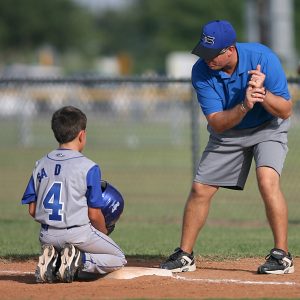
Training Programs – must meet the unique characteristics of each child’s growth and development. When trained properly, a novice athlete will go through the following stages of development:
- Fundamentals – developing agility, balance, coordination
- Foundation – developing run, jump, skate, and throw skills
- Event Group – developing the athletic event skills associated with the Sprints, Endurance, Jumping or Throwing
- Event – develop the skills specific to one athletic event
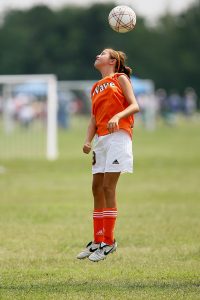 As you can see from the above information, the ‘Dreaded Growth Spurt’ is an extremely important time period in the life of our young athletes and special considerations must be taken into account to ensure they achieve proper development through correct training, conditioning and education. Any child complaining of any sort of physical ailment (pain, tenderness, limitation of movement, etc) should be promptly referred to a qualified health care professional. Over-exposure during these important developmental times can cause poor motor patterning development and a long-term aversion to sports.
As you can see from the above information, the ‘Dreaded Growth Spurt’ is an extremely important time period in the life of our young athletes and special considerations must be taken into account to ensure they achieve proper development through correct training, conditioning and education. Any child complaining of any sort of physical ailment (pain, tenderness, limitation of movement, etc) should be promptly referred to a qualified health care professional. Over-exposure during these important developmental times can cause poor motor patterning development and a long-term aversion to sports.
References
RIESER, P. and UNDERWOOD, L. (2002) Growing Children: A Parent’s Guide. 5th ed. Genentech Inc
WILMORE, J. H. and COSTILL, D. L. (1994) Physiology of sport and exercise. Human Kinetics, Champaign, Illinois
WELTMAN, A. et al. (1986) The effects of hydraulic resistance strength training in pre-pubertal males. Med Sci Sports Exerc. 18 (6), P. 629-638.
BRANDON, R. (2003) Aerobic and Anaerobic Development [WWW] Available from: https://www.brianmac.co.uk/articles/scni4a3.htm
REINBOTH, M. et al. (2004) Dimensions of coaching behaviour, need satisfaction, and the psychological and physical welfare of young athletes. Motivation and emotion, 28 (3), p. 297-313
BAXTER-JONES, A. D. and HELMS, P. J. (1996) Effects of training at a young age: a review of the training of young athletes (TOYA) study. Pediatric Exercise Science, 8, p. 310-327
MACKENZIE, B. (2000) Coaching Young Athletes [WWW] Available from: https://www.brianmac.co.uk/children.htm [Accessed 21/5/2017]
